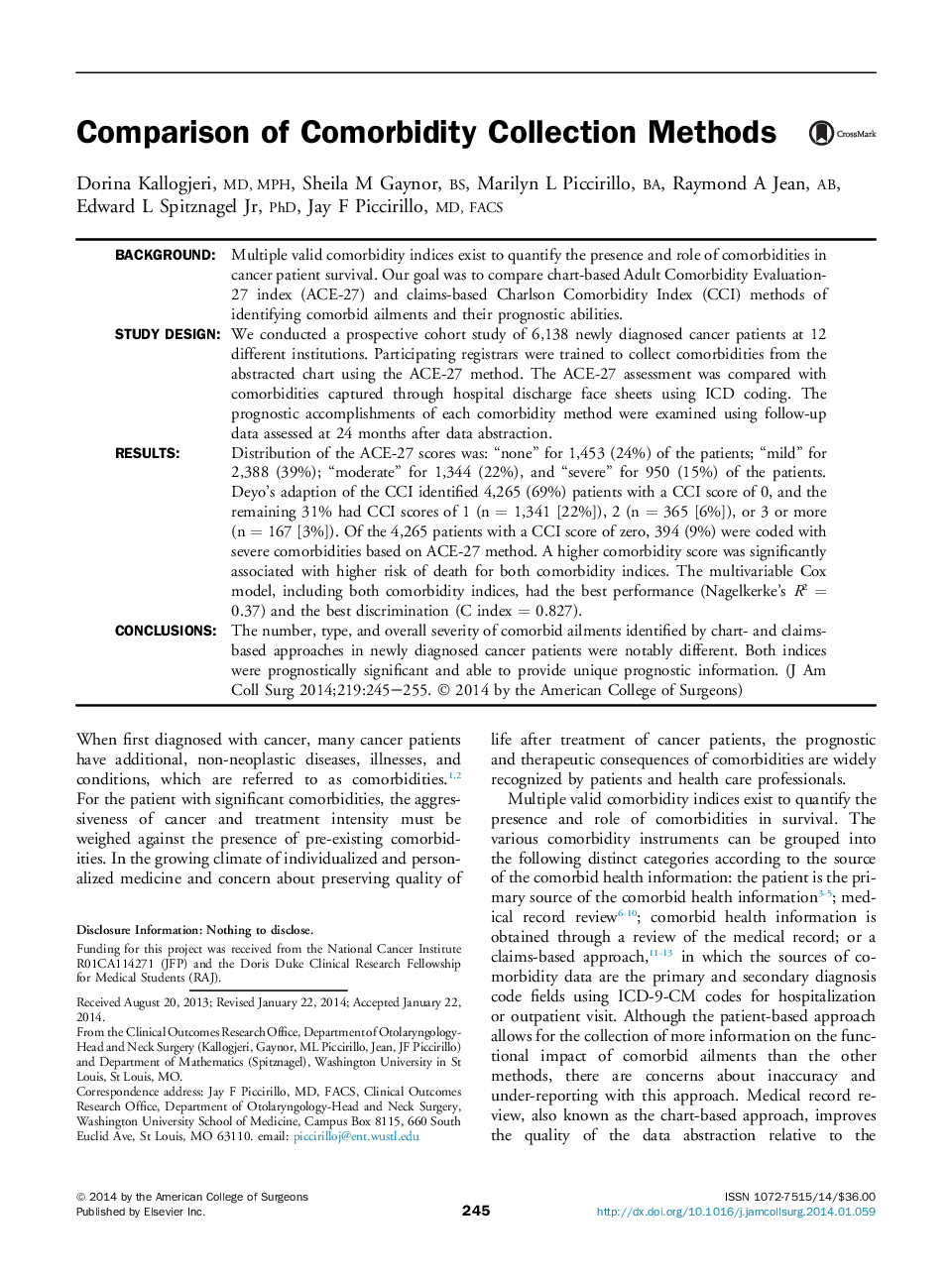| Article ID | Journal | Published Year | Pages | File Type |
|---|---|---|---|---|
| 4291410 | Journal of the American College of Surgeons | 2014 | 11 Pages |
BackgroundMultiple valid comorbidity indices exist to quantify the presence and role of comorbidities in cancer patient survival. Our goal was to compare chart-based Adult Comorbidity Evaluation-27 index (ACE-27) and claims-based Charlson Comorbidity Index (CCI) methods of identifying comorbid ailments and their prognostic abilities.Study DesignWe conducted a prospective cohort study of 6,138 newly diagnosed cancer patients at 12 different institutions. Participating registrars were trained to collect comorbidities from the abstracted chart using the ACE-27 method. The ACE-27 assessment was compared with comorbidities captured through hospital discharge face sheets using ICD coding. The prognostic accomplishments of each comorbidity method were examined using follow-up data assessed at 24 months after data abstraction.ResultsDistribution of the ACE-27 scores was: “none” for 1,453 (24%) of the patients; “mild” for 2,388 (39%); “moderate” for 1,344 (22%), and “severe” for 950 (15%) of the patients. Deyo's adaption of the CCI identified 4,265 (69%) patients with a CCI score of 0, and the remaining 31% had CCI scores of 1 (n = 1,341 [22%]), 2 (n = 365 [6%]), or 3 or more (n = 167 [3%]). Of the 4,265 patients with a CCI score of zero, 394 (9%) were coded with severe comorbidities based on ACE-27 method. A higher comorbidity score was significantly associated with higher risk of death for both comorbidity indices. The multivariable Cox model, including both comorbidity indices, had the best performance (Nagelkerke's R2 = 0.37) and the best discrimination (C index = 0.827).ConclusionsThe number, type, and overall severity of comorbid ailments identified by chart- and claims-based approaches in newly diagnosed cancer patients were notably different. Both indices were prognostically significant and able to provide unique prognostic information.
